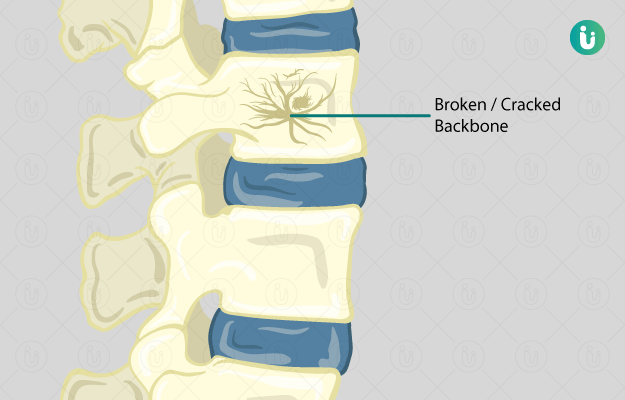What is Spine Fracture?
Spine fracture is the injury of the spinal cord. It mainly occurs in the mid and lower back. In India, it is found that 15-20 million people annually suffer from spinal cord fractures.
What are the main signs and symptoms?
The clinical manifestations include:
- Back pain
- Tingling sensation
- Dislocation of the spine and change in shape of the back
- Tilting towards one side instead of being erect
Some patients with severe trauma may also suffer from brain damage and may not be conscious.
What are the main causes?
Vehicular accidents are the major reasons behind such fractures. It is found that men are more susceptible to injury than women. Falling from heights can also lead to serious emergency cases. Sports activities may lead to injury to the spine. Attack by arms, such as guns, may also lead to spine fractures. Some fractures may be due to osteoporosis, which is more prevalent among women who are post-menopausal. These conditions can vary in their intensity.
How is it diagnosed and treated?
Your physician may order certain tests to observe neurological functions after a thorough history taking and physical examination. These tests may help to determine the nature and site of injury. Imaging techniques, such as computed tomography (CT) and magnetic resonance imaging (MRI) to scan for more than one area, may be used. Nuclear bone scanning may be done to check bone activity.
The treatment is usually based on the type of injury and its pattern.
Surgical interventions are mainly used if there is a major injury to the nerve or dislocation of the spine. More than one bone fragmentation may also require surgery. It can help early recovery. Laminectomy is another procedure where the excess pressure on the spinal cord is reduced.
Non-surgical interventions include
- Use of braces for 2-3 months
- Controlled physical activities
- Rehabilitation to reduce discomfort, improve movement, and return to normalcy
Spine fractures may hamper a person’s movement, and hence it is important that it be rectified immediately to avoid further complications and restore spinal health.

 Doctors for Spine Fracture
Doctors for Spine Fracture 


















